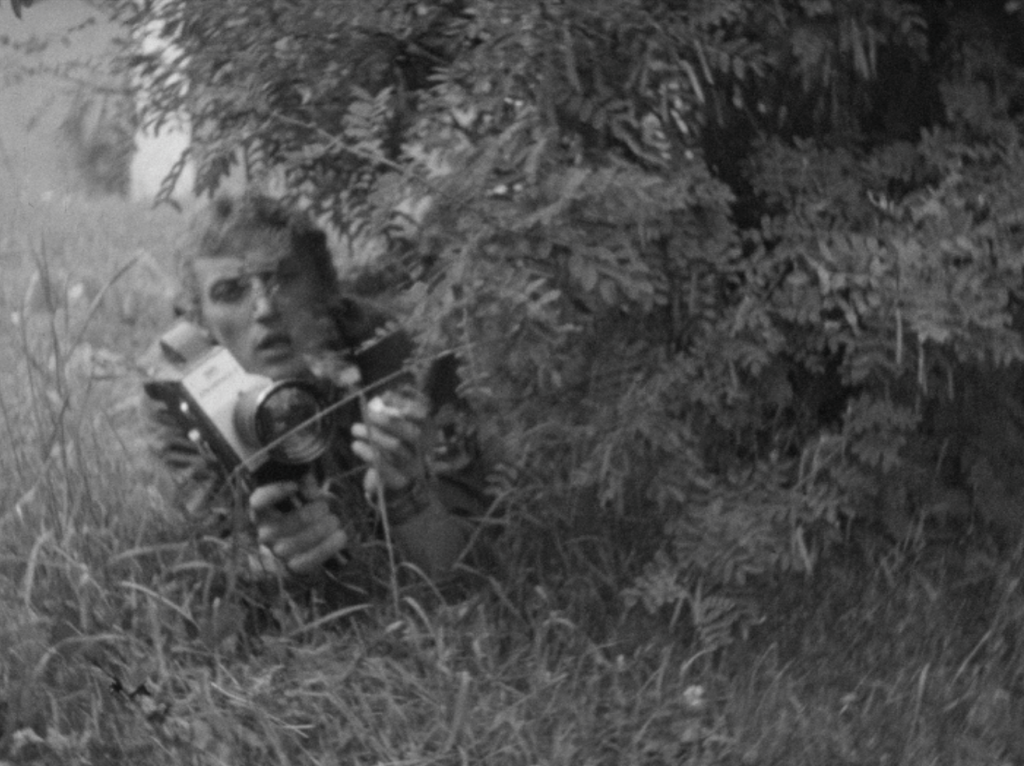Narrow Reels, Wide Eyes
May - June 2021
online
"Narrow Reels, Wide Eyes" is a series of talks and short film programs dedicated to the legacy of amateur filmmaking in five post-Soviet countries – Lithuania, Latvia, Estonia, Ukraine, and Russia. Five films from the collection of the Urban Media Archive of the Center for Urban History are part of the special program. Also, on June 4, there will be a talk with Oleksandr Makhanets, head of Urban Media Archive, on individual practices of amateur filmmaking in Soviet Lviv.
In the Soviet Union, amateur filmmaking was promoted and supported by state institutions as it was considered an organized leisure activity and classified as “people’s art”. Unlike many western countries where active amateur cinema cultures developed in the 1930s, the production of amateur films became a well-established feature of Soviet everyday life only in the 1950s. The development of amateur cinema coincided with the end of the Stalin era and the relative liberalization of public space caused by Khrushchev’s Thaw. The development of the large-scale amateur filmmaking movement also depended on technology. With the invention of more affordable 8mm and 16 mm cameras, capturing everyday life and creating cinematic experiments became even more popular.
The system of amateur film studios that existed in the Soviet Union until the early 90s resulted in the development of a broad community of amateur filmmakers who had a variety of reasons to take up this occupation: from the desire to document private life to more experimental efforts. Interestingly enough, no centralized governmental institution existed to control the output of amateur filmmaking clubs. As a result, state ideology and censorship rarely interfered with the efforts of amateur filmmakers. This was especially evident in the Baltic states and the film festivals that were held there. Their programs encouraged creative experimentation and the search for distinctive artistic expression.
FILMS
- Oleksandr Makhanets. Making films, living our lives. This eclectic program represents five films that were part of independent and individual amateur practice in the late Soviet Lviv. For each of the authors, filmmaking was a part of their life, a way to express themselves and communicate with close friends. They are naive and clear, not trying to surprise the viewer, the main point is sincerity, enthusiasm, and freedom of creativity which is so common for amateurs. The films are from the collection of Urban Media Archive, Center for Urban History of East-Central Europe.Artūras Barysas. Obvious, yet Unbelievable. This retrospective presents nine films that highlight a wide range of themes in Artūras Barysas’ work: from the ironic observation of everyday phenomena to political and social criticism. Films, as the author himself had said, are the exact spirit of that period, felt through urban architecture, people’s clothing, mindset and forms of communication that no longer exist today. The mood of the time is further enhanced by the soundtracks of the films that featured avant-garde and rock music popular in the West at the time. Barysas’ work stands out not only for its connection to the avant-garde art tradition but also for humorously playing with the viewer’s preconceived expectations. Inspired by the hippie ideas, he constantly reminds us of the alternative point of view from which we could perceive the world and strive for freedom. Often his films are not complex stories but rather short anecdotes that give new meanings to ordinary, self-evident actions. Watching these remarkable films-anecdotes, one gets an urge to exclaim: obvious, yet unbelievable.
- Maria Vinogradova. Filmmaking Is for Lovers: Rediscovering Soviet Amateur Film Culture.
- Inese Strupule. Amateur filmmaking in the Latvian SSR: biting social satire and cinematic experiments.
- Artūras Barysas. Obvious, yet Unbelievable.
TALKS
- May 12th 19:00 Maria Vinogradova. Filmmaking Is for Lovers: Rediscovering Soviet Amateur Film Culture
- May 21st 16:00 Inese Strupule. Political, social, and cultural meanings behind Soviet Latvian amateur films (1955–1991)
- May 28th 16:00 Liis Jõhvik. Happily, on the Road. Soviet Estonian Home Movies and Amateur Films about Travelling.
- June 4th 16:00 Oleksandr Makhanets. Amateur filmmaking in Soviet Lviv: Individual Practices. At the beginning of the 1980’s Roman Buchko, film director and film enthusiast from Lviv, who used to be a leader of a local amateur film studio, tried to organize a festival on a bigger scale. He got over 200 names and addresses of people who used to develop their small gauge filmstock in the lab and sent them the invitations to attend the festival. Only two replied trying to figure out how their addresses were leaked. The idea to involve more people in the local amateur film movement failed. But who were those 200 people behind the addresses from the lab and many-many more who developed their 8mm films at bathrooms at night? Individual filming was a kind of invisible activity as it was done mostly for private purposes or small communities and only with the archiving amateur films today we can imagine and reconstruct the practice of the camera owner. The spectrum of films done by independent amateurs is diverse and hard to arrange by genres, this art rather occupies a liminal position between social practice, creativity, and self-expression. The lecture will give an overview of the local context of Lviv individual amateur filmmaking in the second half of the 20th-century based on the collection of The Urban Media Archive of the Center for Urban History.
ORGANIZER: Meno avilys
Credits
Cover Image: Still from "Chronicles of Izhor-Film" by People’s Film Studio of Izhora Factories (1987)
